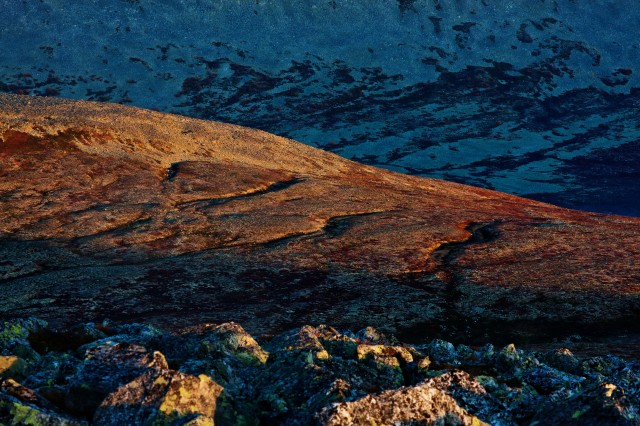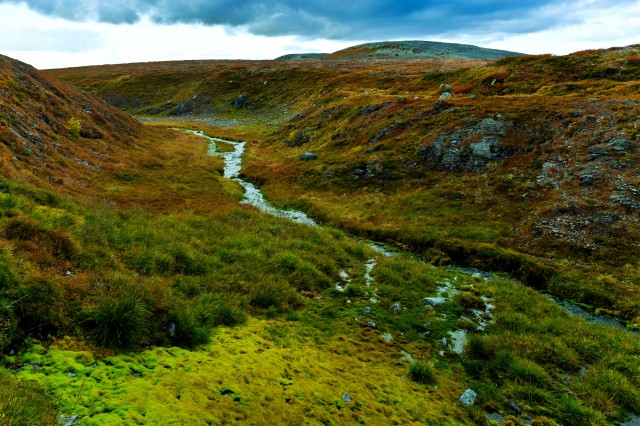Sonfjället
Protected already in 1909, Sonfjället was one of the first national parks in Europe.
Why? These mountains were unusually rich in lichen and relatively unaffected by the feeding and emigration of reindeer. At the time, this was also one of the last strongholds of Sweden’s bear population.
Click on the image and listen!
Water and ice shape landscapes. White water, frost and wind change the land over time. Many signs remain here of the movements of the inland ice.
Erosion from the melted ice water created deep ditches which you may see in several of the rocky slopes, they are called skvalrännor in swedish.

Water also made its way down tunnels under the ice, producing «slukrännor» . Around Sododalstugan one can clearly see several of these traces. There are more «skvalrännor» on the western slope of the Högfjället and on the western side of Gråsidan. There is also a lovely «sadelskåra» on the right hand side when you leave the resting cabin and go down into Sododalen.
Also in the time after the great inland ice shelf the landscape is being changed by weather and water. «Rasrännor» is created when frost cracked blocks of rock comes crashing down the steep slopes.

Here are also slopes covered in blocks of rock, so called «blockhav», which are difficult to traverse.

There are two different kinds of mountain birch woodlands on the Sonfjället. The one spreading across the western slopes of the mountain is mainly dry and rich in lichens.
The mountain birch woodlands on the northern and north eastern slopes are higher in humidity and lusher. Here one may find growing, for example, bunchberry, woodland geranium, goldenrod and common cow-wheat.
 Old Rasmus
Old Rasmus
Old Rasmus is a spruce on the Sonfjäll. It is at least 9500 years old, making it one of the world’s oldest living tree clones. The original tree is gone but through the years the lower branches have been pressed into the soil and new shoots has come up. That is why we can say that it is the same genetic individual standing on the mountain today.